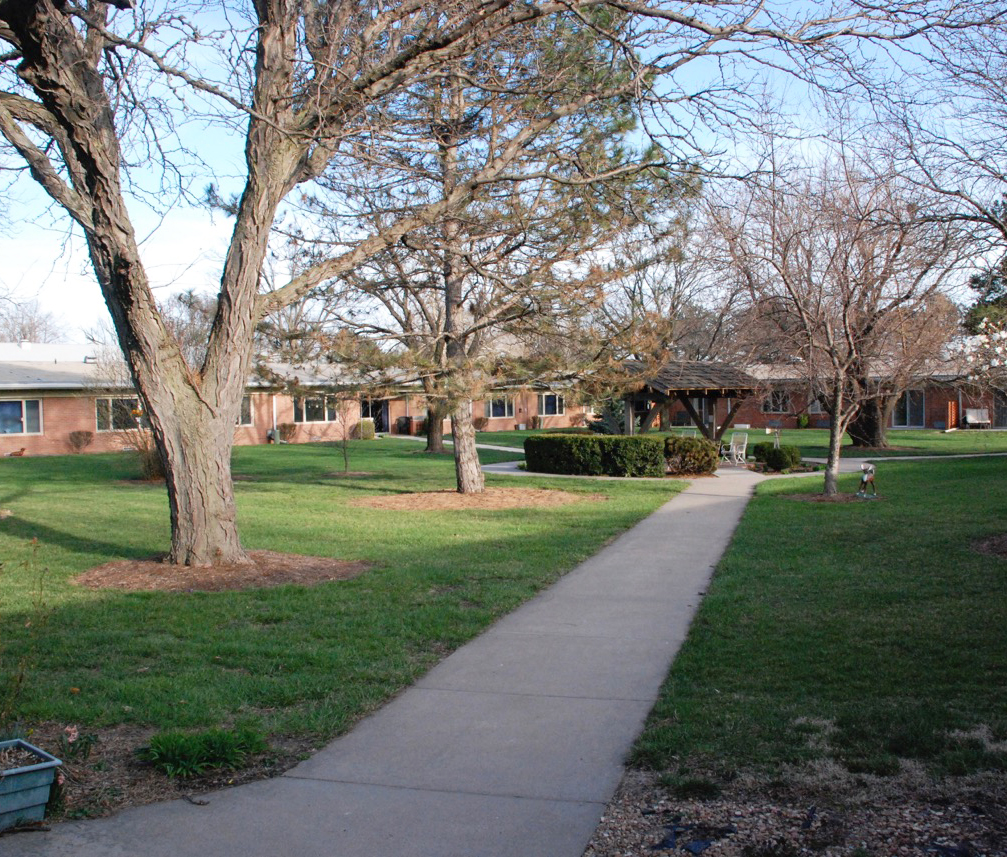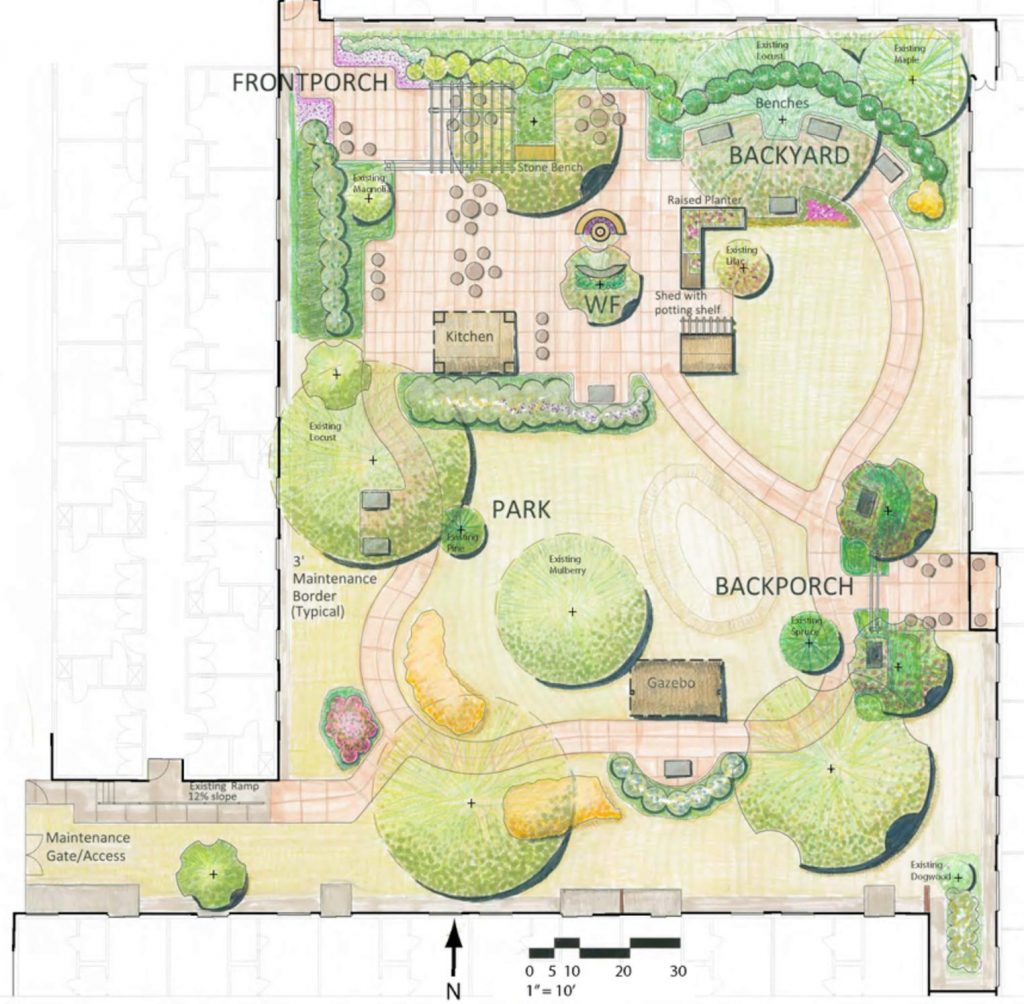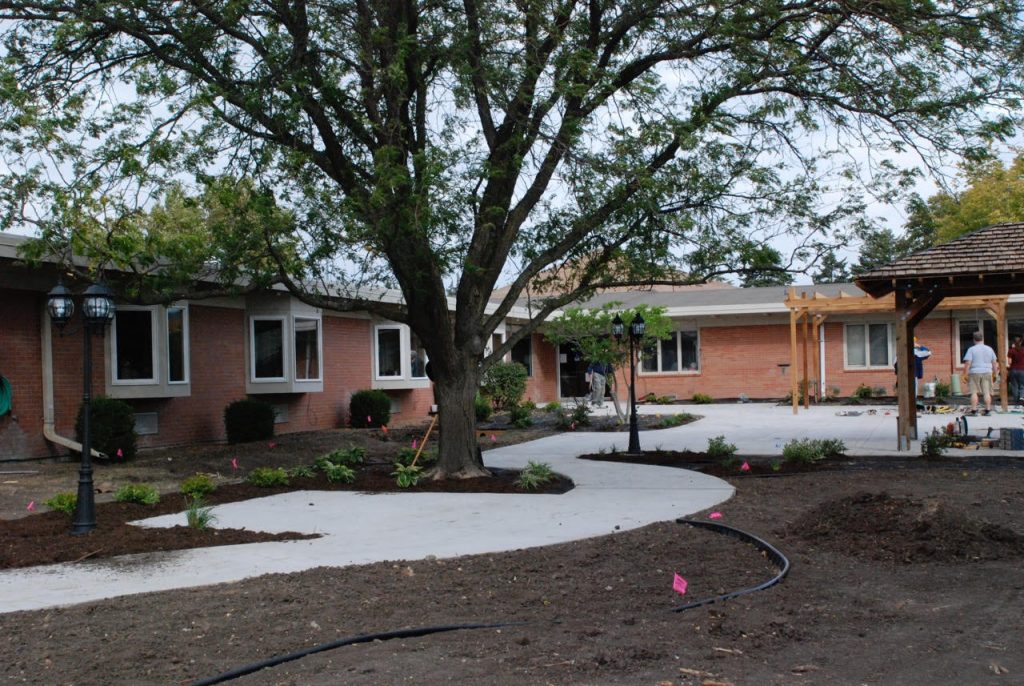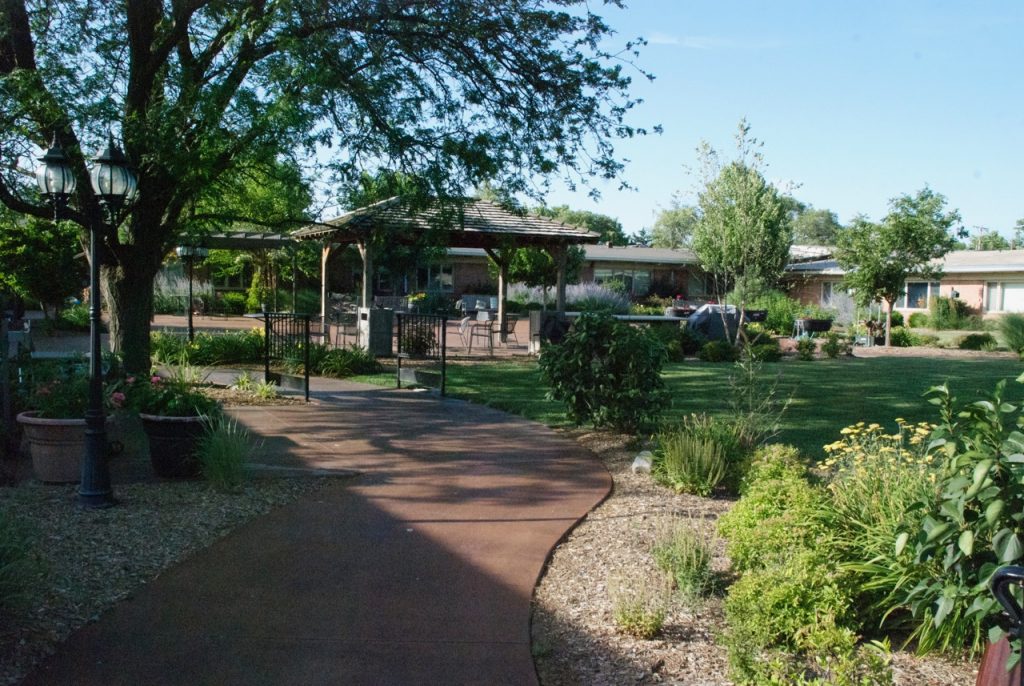“I would like to have the opportunity to get outside a little bit every day.” … “If there was a fence, I could go all around and no one would have to watch me”… – Schowalter Villa Residents
In this short article, I am going to outline a story of the intersecting work done by dedicated care-providers and my Thesis work as a Landscape Architecture graduate student. The story unfolds in the middle of Kansas, in the middle of the United States, and speaks to the healing power of the natural environment.

In 2010, anticipating new growth, Schowalter Villa, a residential living community run by the Mennonite Board of Mission and Charities of Kansas, undertook a renovation of existing facilities and expansion of new facilities. ‘My Garden, My Home’ was aimed at updating an assisted living facility and renovating an existing courtyard. In keeping with their Mennonite tradition, many of Schowalter’s residents come from rural backgrounds with daily outdoor work. Unfortunately, some of these residents are no longer able to go outside without assistance or escort. Thus, the Schwalter community responded to their residents’ desires to have access to the outdoors by engaging in a project to provide a safe outdoor living space with independent access.
As a graduate student in Landscape Architecture at Kansas State University, I began working with Schwalter staff, supervised by Associate Professor Katie Kingery-Page. My interest in landscape architecture grew from a curiosity about the profession and how its knowledge could improve the human experience of landscape, wether in a small town or a busy environment. The Schwalter project provided the opportunity to continue my personal, in-depth study of landscape aesthetics with a real work project.

The staff had already identified program elements that included:
- a large open area for picnics and visits by Hesston Intergenerational Daycare children, an onsite daycare program
- patio space to accommodate twenty to thirty dining residents
- perennial gardens for active recreation
- clear pedestrian circulation
- universal design with ADA compliance
- a combination of passive and active recreation
- a therapeutic and restorative environment
- security and safety for residents and children
They had also recognized the potential for improved health outcomes resulting from increased contact and activity in an outdoor setting, including:
- reduced anxiety and fatigue
- reduced frequency and severity of depression
- pain reduction resulting from increased sunlight exposure
- increased or improved physical functioning, strength, and endurance
- increased attention span and ability to concentrate
- improved socialization with other residents and outside the programmed gardening times
They had clearly done their homework.
As intended, Schwalter’s courtyard would be designed to be a “therapeutic” garden. Historically, there exist well-known examples of restorative environments that utilized the landscape for contemplation and health. In 500 BC, the Greeks constructed Asklepieion sanctuaries designed to facilitate dreaming, as the subconscious was considered essential to curing physical ailment. Islamic paradise gardens represent the heavenly paradise described in the Qur’an and placed to be replenished the body and the spirit. In Europe, restorative gardens appeared during the Middle Ages. Monastic cloister gardens were built during the twelfth to fourteenth centuries and relied on daylight, reflection, and fresh air as part of the healing regimen.

As they got closer to the commencement of the renovation, the Schowalter staff considered four conceptual designs for the courtyard, and one clear winner emerged: ‘My Garden: Rain Garden Ribbons,’ an arc and tangent design which featured a large, open, park-like area, rain gardens to handle stormwater runoff, and curving linked paths. Previously identified program elements were grouped into “areas with clear meaning in the context of home – front porch … back porch, and backyard,” Zeisel, J. (2007). Creating a therapeutic garden that works for people living with Alzheimer’s (Journal of Housing for the Elderly, 21:1 13-33).

In 2011, Schowalter began renovating the courtyard using local contractors. The original planting plan and drainage recommendations produced during the semester were now implemented. By October 2011, the courtyard was ready for planting by staff and volunteers.
In 2015 I visited and talked with Schowalter staff. Kansas gardens are lush with blooming flowers in June, and this well-maintained courtyard was full of color and texture. The sidewalks had been tinted a pale terra cotta color to decrease glare on aging eyes. Some residents have individual planters that are lovingly tended. Residents also have options for sitting in the courtyard – sun or shade, alone or with a group – and the seating was sturdy, but lightweight and moveable.
Today, the courtyard is used extensively and is well loved. Visitors, residents, and staff benefit from the opportunity to enjoy nearby nature. It is especially loved by Zoe, the therapy dog. “She loves the courtyard. She uses it every day. It is her restoration/recreation therapy,” Treva Greaser, Executive Director, Schowalter Villa.

Judy Burch | Landscape Architect- MLA, MLS, ASLA, Certificate of Merit in Healthcare Gardens
